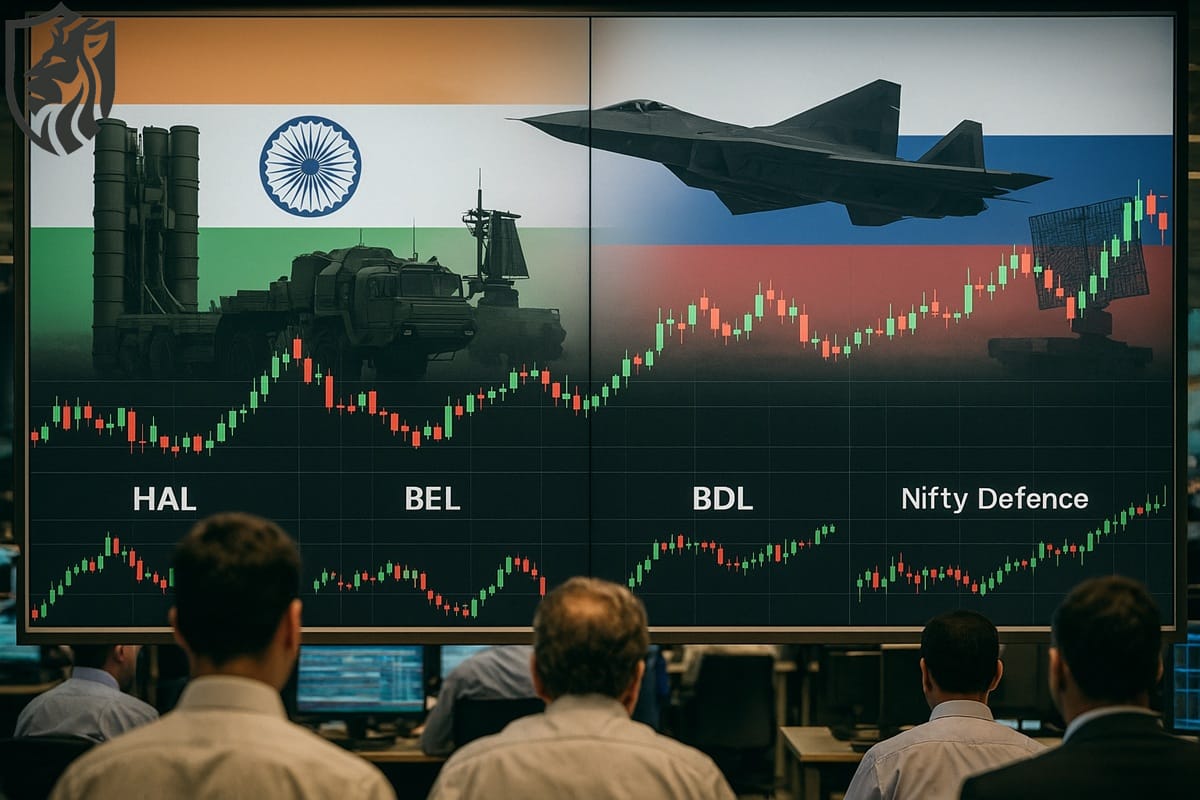
Secret UAE Radar in Somalia
Reports confirm the UAE has deployed a high-tech radar in Puntland, northeastern Somalia, near Bosaso Air Base. The radar is located at the Puntland Maritime Headquarters, which is operated with support from the United Arab Emirates.
This system is the Israeli-made ELM-2084 3D AESA Multi-Mission Radar, known for its advanced surveillance capabilities. It monitors aircraft, missiles, drones, and artillery fire with high accuracy and fast response times.
Open-source intelligence analysts and journalists in Puntland were the first to confirm its presence. This deployment raises questions about the UAE’s growing strategic interest in the Horn of Africa.
Puntland lies along key global shipping routes, making it valuable for military and trade control. Though its exact mission is unclear, the radar strengthens the UAE’s regional air defense network.
The ELM-2084, developed by ELTA Systems under Israel Aerospace Industries, offers real-time, 3D battlefield awareness.
It can track up to 1,101 targets at a time and detect threats nearly 470 kilometres away. Its AESA technology quickly adjusts to changing airspace threats without needing physical movement or rotation.
Somalia’s semi-autonomous Puntland
This flexibility is ideal for fast-moving or unstable areas like Somalia’s semi-autonomous Puntland region. The radar supports systems like Israel’s Iron Dome and David’s Sling with precision targeting and fire control.
The Iron Dome, using this radar, has intercepted over 1,000 rockets with a success rate of 90 percent. The radar unit includes a control station, cooling system, and generator—making it fully mobile and adaptable.
Its setup allows easy deployment across land vehicles, buildings, or temporary platforms in remote locations. Such mobility ensures effective coverage in conflict-prone or logistically challenging environments like coastal Somalia.
This UAE move likely signals a broader regional ambition beyond maritime security. With increasing foreign interest in the Horn of Africa, radar deployments like this could shift regional power dynamics.

The ELM-2084 stands out from other systems, such as Russia’s 96L6E used in S-400 systems and the U.S. AN/TPQ-53 counterbattery radar, in that it integrates air defense and artillery detection within a single framework.
Gulf of Aden
The ELM-2084 offers a unique advantage in complex operational environments; the AN/TPQ-53 specializes in projectile tracking, and the 96L6E stresses long-range air surveillance.
Puntland’s strategic location near the Gulf of Aden, a pivotal point for global marine traffic via the Suez Canal, makes the installation of the radar especially important.
The Gulf accounts for approximately 12 percent of global trade and 30 percent of container traffic, as reported by the International Maritime Organization.
Threats such as piracy, which afflicted the region in the late 2000s, and recent assaults by Yemen’s Houthi rebels on Red Sea shipping highlight the area’s susceptibility.
A major player in regional security, the UAE has run Bosaso Air Base since 2017, primarily to equip and train Puntland’s maritime police against piracy.
Including the ELM-2084 suggests a wider range of activity. Although the group’s main operational range extends beyond what the radar at Bosaso can detect, it may enhance the surveillance of marine and aerial traffic, potentially tracking threats such as Houthi drones or missiles.
Alternatively, the system may function as a node within a broader intelligence-gathering network, monitoring the movements of rival powers’ assets—naval vessels, aircraft, or commercial ships—in this vital corridor.
UAE’s investments
The Horn of Africa has evolved into a geopolitical battleground, with the UAE contending with Turkey, Qatar, China, and Western countries for dominance.
The UAE’s investments in ports such as Berbera in Somaliland and its alleged military presence in Yemen indicate a strategy to establish maritime supremacy.
Turkey has established a substantial presence in Somalia, operating a military base in Mogadishu and training Somali forces. Qatar, on the other hand, sustains connections with factions within the Somali government, thereby complicating the UAE’s relations with Mogadishu.
The installation of the radar in Puntland, as opposed to federal Somali territory, underscores the discord between Puntland’s semi-autonomous administration and the central government in Mogadishu.
Puntland has consistently sought more autonomy, and the UAE’s direct intervention with its leaders could point to implied support of that freedom.
This dynamic reflects historical patterns in the area, where outside powers have helped local entities to advance their goals, as shown during the Cold War when the U.S. and Soviet Union fought for dominance over Somalia’s ports.
The choice of an Israeli-made radar is rather important. With the 2020 Abraham Accord, the UAE and Israel developed official ties, fostering cooperation in technology and defense.
The implementation of ELM-2084 emphasized UAE access to cutting-edge Israeli technologies, reflecting this cooperation.
AESA Technology
Apart from its symbolic importance, the radar’s capabilities match the UAE’s need for thorough surveillance in a territory marked by hazards ranging from basic piracy to sophisticated drone strikes.
Comparatively, China’s Type 346 radar, used on naval destroyers, offers similar AESA technology but is less mobile and intended especially for marine uses rather than multi-mission capabilities.
Although the ELM-2084 lacks integration with short-range defenses such as the Iron Dome, Russia’s Nebo-M, which is a similar system, offers long-range detection capabilities. The ELM-2084 implementation by the UAE shows a taste for flexibility, most likely influenced by various threats in the region.
The presence of the radar could change Puntland’s security scene. Along with a smaller but growing Islamic State contingent, the area faces continuous challenges from al-Shabaab, the al-Qaeda-affiliated group functioning across Somalia.
Recent accounts, including a February 2025 Washington Post investigation, highlight Puntland’s troops engaging Islamic State militants in the Cal Miskaat Mountains, causing over 150 deaths among fighters during a month-long campaign. By tracking drone or mortar strikes—which both sides have used—the ELM-2084 could improve these efforts.
Bosaso’s Port
Still, foreign military bases usually inspire local hostility. Based on limited access, UAE activities in Bosaso have sparked demonstrations in Puntland, where fishing communities depend on coastal waters, as reported in a 2019 International Crisis Group paper.
The deployment of radar could aggravate these conflicts, particularly if residents see them as favoring foreign interests over their own.
The UAE’s activities in Puntland go beyond just security issues. With an eye toward turning Bosaso’s port into a regional trading center, DP World, the emirate’s investment company, has made significant expenditures there.
The radar could protect these investments by monitoring threats to infrastructure or shipping, in line with the UAE’s vision of merging military and commercial supremacy.
The decision reflects historical precedents, such as Britain’s 19th-century control of Aden to protect trade routes to India. Still, the radar’s purpose might also include training Puntland’s troops, thereby helping to transfer technical knowledge.
Although there is no public data to support such initiatives, the UAE’s past capacity-building activity in Somalia suggests their feasibility.
Somalia’s Neighbours
While such an initiative may strengthen Puntland’s defenses, it runs the danger of escalating local rivalries, especially if Mogadishu sees it as a challenge to federal power.
The deployment could have effects on Somalia’s neighbors. Hosting U.S., Chinese, and French military bases, Djibouti’s port-centric economy depends on Gulf of Aden stability.
Ethiopia, grappling with its disputes regarding Red Sea access, may perceive the UAE’s actions as complicating its strategic considerations.
The Houthis are fighting in Yemen across the gulf, but the radar’s range limits its direct influence there. Though these claims remain unverified, the system may provide intelligence to UAE or allied operations in Yemen as recommended in posts on X.

The radar’s presence could push Turkey or Qatar to expand their role in Somalia, worsening existing proxy rivalries. Foreign interference in the Horn has often fuelled chaos, as shown by Ethiopia’s U.S.-backed invasion of Somalia in 2006.
That past failure serves as a warning amid growing foreign military footprints in this volatile region. The ELM-2084 radar’s global use gives clues about what it might bring to Puntland’s air defense network.
Azerbaijan
ELTA Systems says countries like Canada, Singapore, and the Czech Republic have operated the radar since the early 2000s. Israel first used it during Operation Cast Lead in 2008, where it helped detect and warn against Hamas rocket fire.
In 2019, Azerbaijan reportedly used the radar to pinpoint enemy artillery, according to a January 2024 Janes report. These examples prove the radar works in urban and open battlefield environments, showing strong adaptability.
In Puntland, its ability to spot low drones or small boats may help combat piracy and asymmetric threats. The radar’s modern materials allow it to survive harsh conditions, unlike outdated Soviet systems still used elsewhere in Africa.
That contrast may have led the UAE to choose the ELM-2084 over older radar types. The timing of this deployment is crucial, as the Horn of Africa faces new political and military flashpoints.
Ethiopia’s port deal with Somaliland has angered Somalia, creating tension across the region. Meanwhile, Houthi attacks in the Red Sea continue to threaten shipping lanes and global trade.
The UN Security Council condemned these attacks in January 2025, reflecting growing concern over maritime security. As a member of the U.S.-led coalition, the UAE may see this radar as part of its deterrence strategy.
Turkey and Qatar
Its deployment in Puntland, not a secure UAE base, suggests a desire for frontline surveillance and real-time intelligence. The radar’s role remains unconfirmed, but its location hints at deeper strategic motives beyond simple defense.
Interestingly, the UAE has not officially acknowledged the deployment, keeping regional analysts guessing. However, local journalists in Puntland, cited by OSINT Warfare on X, confirmed its presence.
This silence from Abu Dhabi adds mystery to an already complex situation in the Horn. It also underlines how the UAE is evolving into a powerful regional actor with military tools to match.
Once focused on finance and trade, the UAE now invests heavily in drones, radars, and missile defense. The UAE’s expanding alliance with Israel has provided access to technology that rivals such as Turkey and Qatar still lack.
Conclusion
However, this assertiveness entails risks. In Somalia, foreign interventions have a complicated history, ranging from the 1993 Black Hawk Down incident to the current African Union mission against al-Shabaab.
The UAE’s alliance with Puntland could potentially alienate Mogadishu, thereby challenging its regional diplomacy. Likewise, China, which runs a base in Djibouti monitoring the same maritime routes, may be interested in the radar.
The ELM-2084 deployment forces reflection on the balance between security and stability as the UAE increases its engagement in the Horn. It strengthens Puntland’s defenses and increases UAE regional influence, possibly deterring threats to important maritime routes.
However, it also carries the risk of intensifying regional resentment and geopolitical rivalries, reminiscent of previous interventions that shook Somalia.
Unquestionably, the radar can monitor missiles, drones, or vessels, but its real impact depends on how the UAE uses it. Is it a tool for combating terrorism, stability, and protecting trade?
Alternatively, does it show a bolder agenda, establishing the UAE as a Gulf of Aden gatekeeper? Time will clarify these questions, but the arrival of the radar marks a turning point in the complex story of Horn.
References
- International Maritime Organization—Global trade through Gulf of Aden
- Israel Aerospace Industries – ELM-2084 Radar System Overview
- Washington Post—Puntland forces combat ISIS militants (Feb 2025)
- Janes – ELM-2084 battlefield applications (Jan 2024)
- OSINT Warfare on X (formerly Twitter)—UAE radar in Puntland
- International Crisis Group—UAE activities in Puntland
- ELTA Systems – ELM-2084 Multi-Mission Radar Capabilities
- UN Security Council—Condemnation of Houthi attacks on Red Sea shipping (Jan 2025)
- Defense News Today—UAE military cooperation in Somalia
- Facebook—Pakistan Defence Forum on UAE Radar Deployment








